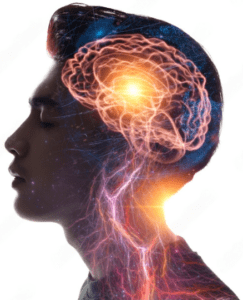Modafinil mechanism:

Modafinil is a wakefulness-promoting agent that is used to treat sleep disorders such as narcolepsy, sleep apnea, and shift work sleep disorder. It is also used off-label as a cognitive enhancer and to improve focus and productivity.
The exact mechanism of action of modafinil is not fully understood, but it is believed to work by increasing the release of several neurotransmitters in the brain. Specifically, modafinil increases the release of dopamine, norepinephrine, histamine, and orexin, which are all involved in regulating arousal, attention, and motivation.
Dopamine is a neurotransmitter that is involved in motivation, reward, and pleasure. By increasing dopamine release, modafinil can improve mood and motivation, as well as cognitive function.
Norepinephrine is a neurotransmitter that is involved in the body’s stress response and can increase heart rate, blood pressure, and respiration. By increasing norepinephrine release, modafinil can promote wakefulness and increase alertness.
Histamine is a neurotransmitter that is involved in promoting wakefulness and regulating the sleep-wake cycle. By increasing histamine release, modafinil can promote wakefulness and reduce fatigue.
Orexin is a neurotransmitter that is involved in regulating the sleep-wake cycle and promoting wakefulness. By increasing orexin release, modafinil can improve alertness and reduce daytime sleepiness.
sleepiness.
Modafinil also inhibits the reuptake of dopamine, which can increase the concentration of this neurotransmitter in the brain and improve cognitive function, focus, and alertness.
Overall, modafinil’s mechanism of action involves increasing the release of several neurotransmitters in the brain that are involved in regulating arousal, attention, and motivation. This can lead to improved cognitive function, focus, and wakefulness, making it a useful tool for treating sleep disorders and improving productivity.
Comparison with other drugs:
Other stimulants like amphetamines, caffeine, and methylphenidate have been compared to modafinil, which is a wakefulness-promoting agent with a unique mechanism of action that sets it apart from these drugs.
Dopamine and norepinephrine release in the brain are increased by amphetamines and methylphenidate, both of which are central nervous system stimulants. These neurotransmitters are involved in regulating arousal, attention, and motivation, but these drugs can have a high potential for abuse and be highly addictive.
Caffeine, on the other hand, is a stimulant that blocks adenosine receptors in the brain. Adenosine is a neurotransmitter that promotes sleep and suppresses arousal. Caffeine can help promote wakefulness and increase alertness by blocking its receptors. However, caffeine can lead to jitteriness, anxiety, and insomnia in high doses and has a relatively short half-life.
Modafinil, on the other hand, works by increasing the release of histamine and orexin in the brain, which play a role in promoting wakefulness and regulating sleep-wake cycles. Modafinil also inhibits the reuptake of dopamine, increasing the concentration of this neurotransmitter in the brain, which can improve cognitive function, focus, and alertness.
Compared to other stimulants such as amphetamines and methylphenidate, modafinil has a lower potential for abuse and addiction. Modafinil has fewer side effects and a longer half-life than caffeine, making it a useful tool for promoting wakefulness and improving cognitive function. However, it should still be used with caution and under medical supervision as it can interact with other medications and may not be suitable for everyone.




